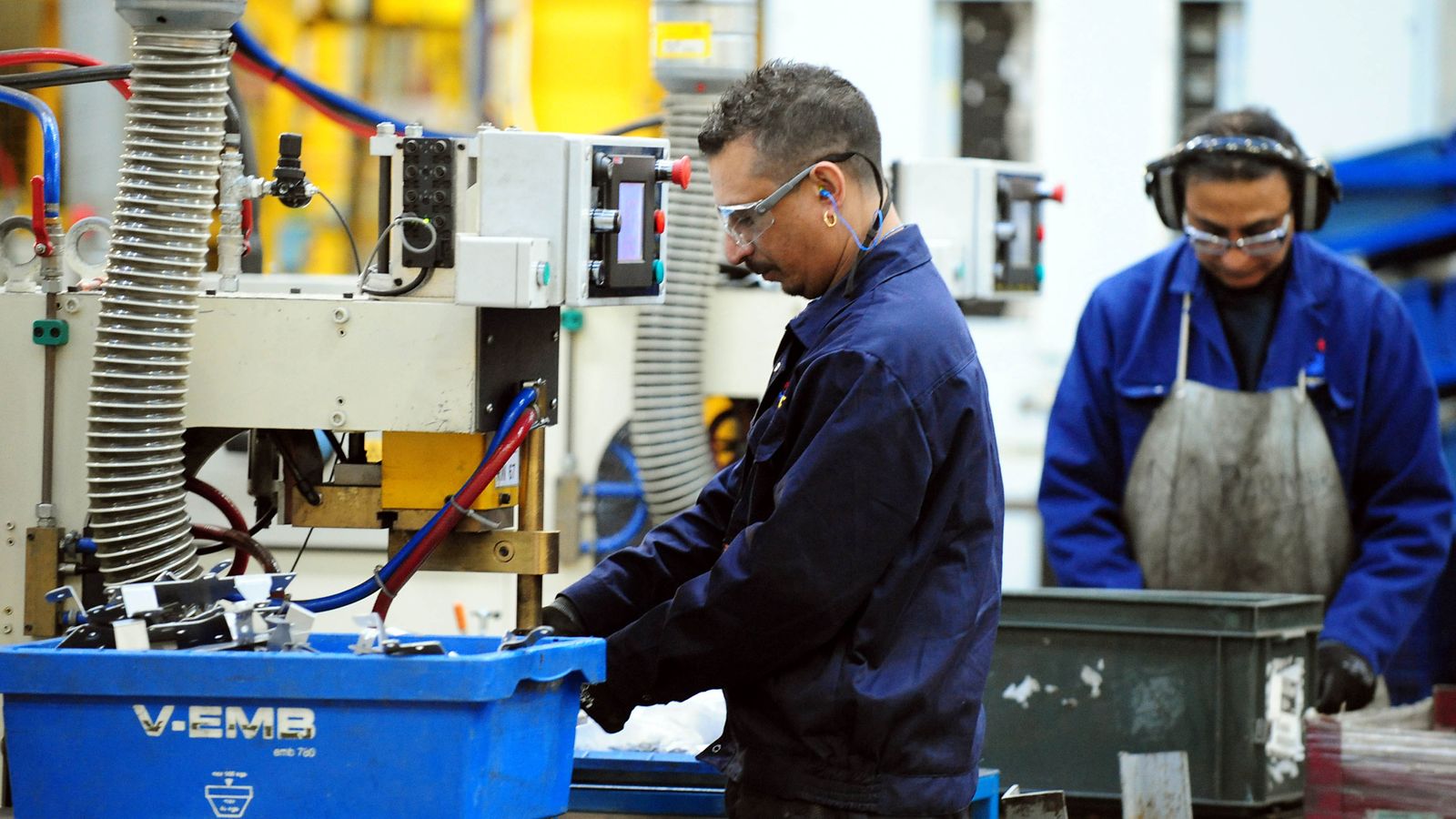British manufacturers are continuing to grow but face soaring costs due to increased demand and persisting supply chain problems caused by the COVID-19 pandemic.
The sector exceeded expectations in the monthly IHS Markit/CIPS Purchasing Managers’ Index (PMI) survey released on Monday.
It showed a reading of 60.4 last month, down from a 63.9 score in June.
Live COVID updates from UK and around the world
The dip comes on the back of record highs earlier this year as the economy bounced back following the turmoil of the COVID-19 crisis.
Despite the fall, the July score signals high growth, and significantly outstrips the 57.1 reading that economists had expected for the month.
Any score above 50 is considered to show growth in the sector.
Partly because of this continuing growth, the cost of materials has been climbing as demand increased to match output.
Problems in supply chains around the world has also put pressure on the price of many items.
In all, 72% of manufacturers reported that their costs were rising.
Duncan Brock, group director at the Chartered Institute of Procurement & Supply, said: “Supply gridlock resulted in a moderate deceleration in the rates of expansion of production, new orders and job creation.
“A mismatch in global recovery rates following the pandemic meant some businesses abandoned their usual suppliers to seek new sources and avoid elevated lead times and the shortages gripping the sector.
“Disruption is a worldwide problem however, so there was likely to be limited success in remodelling supply chains completely, with the challenges too difficult to circumnavigate.”
Please use Chrome browser for a more accessible video player
The growing cost of materials from chemicals, commodities and cardboard to metals and food stuffs has led manufacturers to have to start charging more for the products they are making.
IHS Markit director Rob Dobson said: “Amid growing indications that many supply chain disruptions and raw material shortages are unlikely to be fully resolved until 2022, the outlook remains one of constrained growth combined with high inflation for the foreseeable future.”






















